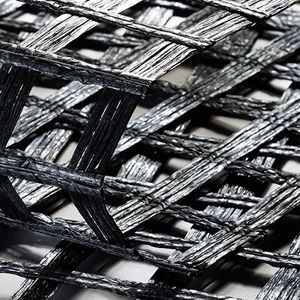
- Products
- Catalogs
- News & Trends
- Exhibitions
Reinforcement geogrid FORTRAC®for foundationpolymeraramid






Add to favorites
Compare this product
Characteristics
- Function
- reinforcement
- Applications
- for foundation
- Material
- polymer, aramid
Description
Highly resilient, flexible geogrid with a proven track record in soil reinforcement.
The flexible, high-strength Fortrac geogrid boasts a 20-year-plus track record in soil reinforcement applications. The geogrids are made from high-modulus, low-creep synthetic materials enclosed in a protective polymer coating. Moreover, they are manufactured in such a way as to guarantee high stability at the intersections. High-modulus polyester (PET) has been the standard raw material for our geosynthetics for over 20 years. In some cases, special requirements have prompted the use of advanced polymers, e.g. polyvinyl alcohol (PVA) and aramid. While aramid guarantees exceptionally high axial stiffness, PVA offers high axial stiffness in conjunction with extra-high resistance to chemicals - specifically, alkaline substances - in the soil.
Features
High tensile strength in conjunction with low strain
High available strength up to 2500kN
Excellent long-term performance due to low creep
High resistance to chemicals and microorganisms in soil, UV radiation and mechanical damage
Good interlock due to optimum sizing of geogrid mesh to suit maximum soil particle size
Simple installation thanks to low weight per unit area and flexibility/adaptability
Wide range of available strengths for both uniaxial and biaxial structures
Project-specific choice of raw materials possible
Why choose Fortrac?
Fortrac geogrids can be manufactured from alternative raw materials where these better meet project requirements.
Catalogs
Related Searches
- Geotextile
- Geogrid
- Reinforcement geogrid
- Geomembrane
- Polyester geogrid
- Foundation geogrid
- Ground stabilization geogrid
- Waterproof geomembrane
- Erosion control geogrid
- Composite geogrid
- Public work geogrid
- Three-dimensional geogrid
- Landfill geomembrane
- Polypropylene geogrid
- Drainage geogrid
- Synthetic geomembrane
- Drainage geomembrane
- Tube geotextile
*Prices are pre-tax. They exclude delivery charges and customs duties and do not include additional charges for installation or activation options. Prices are indicative only and may vary by country, with changes to the cost of raw materials and exchange rates.







